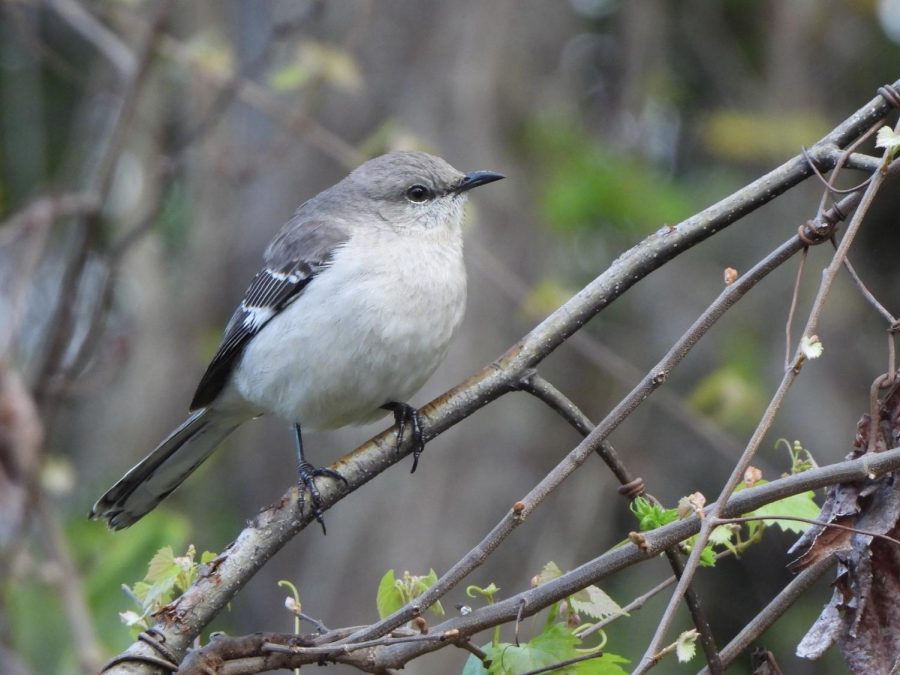Birds of Early April
A northern mockingbird perches on a branch.
As spring rolls around, its arrival is announced by choruses of morning birdsong. In Ann Arbor, we associate spring with fields of Robins digging up worms from newly unfrozen ground. Many unusual species pass above on their northward migrations, and the year-round birds are primed for nesting and fighting over each other.
I decided to track all the birds I could see or hear from within a few miles of CHS for a week, to see how many species I could find and share the excitement of this time. I used an app called Merlin, which records audio of birdsong, to identify calls, and Pentax binoculars to find them.
Overall, I saw or heard 38 species. The rarer ones included the Northern Mockingbird, Common Loon, Black-Crowned Night Heron, Great Horned Owl, Read-Headed Woodpecker, Marsh Wren, Palm Warbler, Purple Finch, Ruby-Crowned Kinglet, Wood Duck, and Belted Kingfisher.
To find them I walked along the Huron River by Argo Canoe Livery, in the woods by Skyline High School, and through West Park, and recorded sound on my way to school every day.
For most avian species, mating season occurs between March and July. The majority of the birdsong we hear comes from males, usually trying to establish territory with other males and/or attract females. Birdsong’s evolutionary roots date to 65 million years ago. Bird calls are very different, they sound like little ‘cheeps’ and are more throaty. Most have them, and they are used for basic communication and to warn of danger.
Scientific consensus is split on why birds sing the most in the early morning. For decades, the leading theory was that the morning was the time of the day in which meteorological conditions created the best opportunity for sound to travel, so while birds sang just as often throughout the day, we heard it most in the morning. A newer hypothesis is that territory is ever changing among male birds, and the early morning is when it is confirmed/established for the day; The early morning is before they have eaten and are warmed up (much like human musicians) so it is “birdly” to be loud then.
For anyone interested in birding I’d highly recommend the app Merlin, though it takes up a good bit of phone space it can operate without internet and hear and identify keenly and quickly. It’s truly the best time of year to start.










